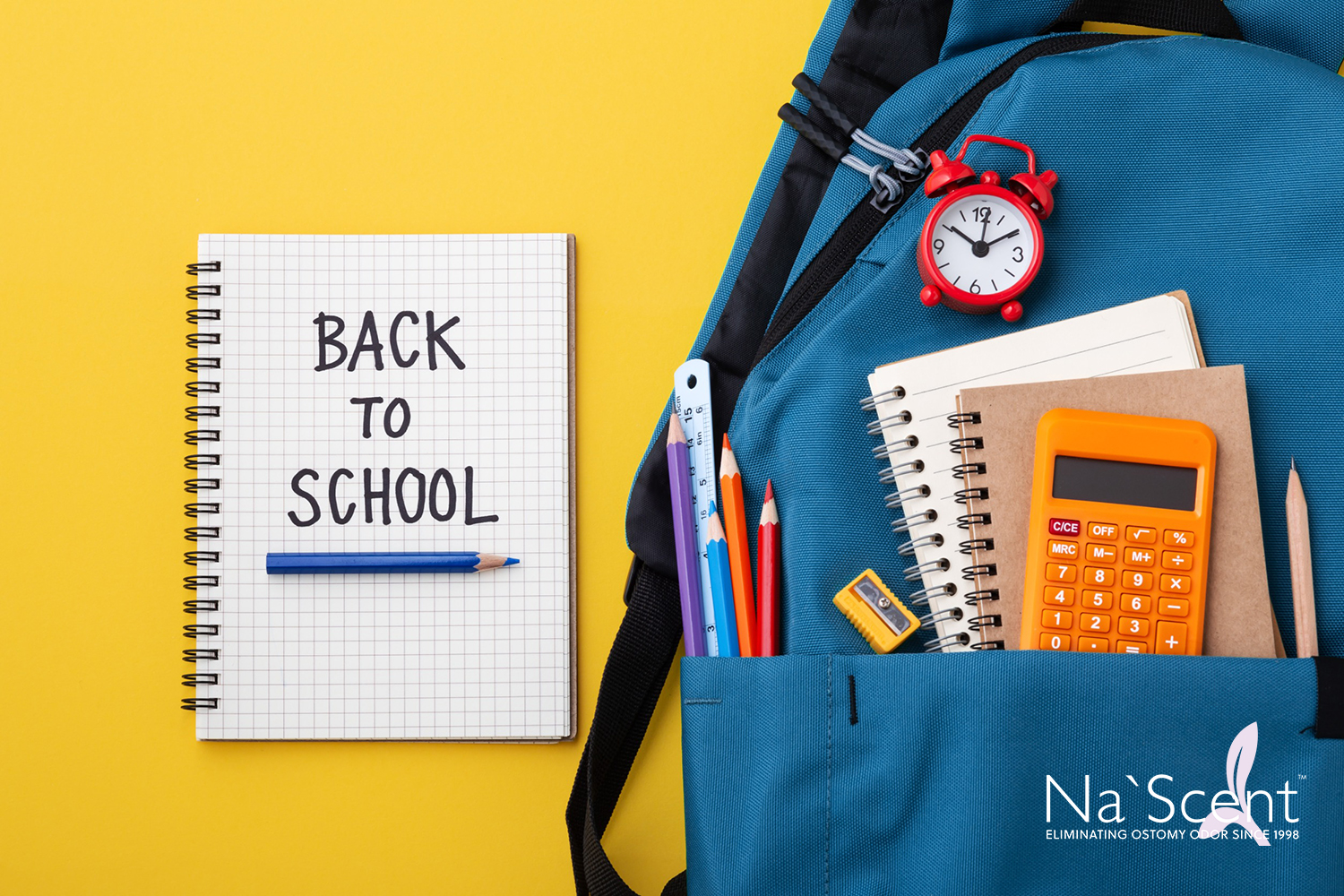Ostomy Care: Back to School and Transitioning into Fall

As the school year kicks off and the fall season begins, students with ostomies may face unique challenges in adjusting to their routine. The transition can be made smoother with thoughtful preparation, awareness, and a few practical tips to help maintain comfort and confidence throughout the school year.
1. Back-to-School Preparation for Students with an Ostomy
Returning to school after an ostomy surgery or managing an existing one during the school year can be daunting for students, parents, and caregivers. Here are a few steps to help ensure a successful start to the school year:
- Communication with the School: Before the school year begins, it’s important to meet with school staff, including teachers, the school nurse, and any other relevant personnel. Ensure they understand the student’s needs, including access to the bathroom, storage of ostomy supplies, and any emergency protocols. Having an Individualized Education Plan (IEP) or 504 plan in place can help safeguard accommodations.
- Pack Extra Supplies: It’s essential for students with an ostomy to have extra supplies on hand, including ostomy bags, wipes, a change of clothing, and any necessary creams or deodorants. Consider creating a small, discreet “ostomy kit” that can be stored in their locker or carried with them in their backpack.
- Bathroom Access: Speak with the school about allowing the student unrestricted bathroom access or the ability to use a staff restroom if privacy is a concern. Establishing a clear plan for where and how they can take care of their ostomy without stress is vital.
- Confidence and Comfort: Encourage open conversations with your child about their feelings regarding school and their ostomy. Building their confidence through role-playing situations they may encounter at school can be beneficial. Remind them that their health and comfort come first.
2. Ostomy Care During the Fall and Cooler Weather
As the weather changes and temperatures cool, it’s essential to consider how the fall season can impact ostomy care. Colder weather can affect the skin, clothing choices, and the types of activities that students engage in. Here’s how to manage these changes:
- Hydration: Fall may bring cooler temperatures, but it’s still crucial to maintain hydration. Dehydration can cause complications with ostomy function, particularly for those with ileostomies. Encourage drinking water throughout the day, even if the cooler weather makes you feel less thirsty.
- Skin Care: As the weather cools, the skin around the stoma may become drier or more sensitive. Consider using a moisturizing barrier cream that works well with ostomy adhesive to help protect the skin from the colder, drier air. Always keep an eye out for any irritation or signs of infection.
- Clothing Choices: Layered clothing becomes a go-to in fall, but it’s important to be mindful of how this may impact the comfort of an ostomy pouch. Opt for breathable fabrics and avoid overly tight or restrictive waistbands that could press against the pouch and cause discomfort. Many students find that high-waisted or stretchy pants provide a comfortable option that accommodates the pouch.
- Physical Activities: With the start of school comes increased physical activity, whether it’s gym class, sports, or recess. It’s important to ensure the student feels comfortable participating. Make sure the ostomy pouch is securely in place before any activity and consider using ostomy belts or bands for added support during sports or exercise.
3. Building Support Networks
For students, having a strong support network can make a huge difference in their school experience. Here’s how to help foster that:
- Peer Education: While it’s not necessary to broadcast medical information, some students may feel more comfortable sharing details with close friends or classmates. Explaining the ostomy in simple terms can help reduce stigma or confusion and promote understanding.
- Parent and Caregiver Involvement: Stay in close communication with your child and their school. Regular check-ins can ensure everything is going smoothly, and your child feels supported both academically and medically.
- Join Support Groups: Connecting with other students or families who manage ostomy care can provide a sense of community. Online or local ostomy support groups can offer valuable tips, encouragement, and shared experiences, particularly as students navigate back-to-school life and the changing seasons.
4. Preparing for Fall Activities and Events
Fall brings school events like field trips, extracurricular activities, and holiday celebrations. Here’s how to prepare:
- Field Trips: Before any off-campus activities, make sure the school is aware of your child’s needs and has packed additional supplies. It’s also a good idea to educate trip chaperones or leaders on how to assist if needed.
- Holiday Celebrations: Some fall holiday events may involve food or treats that can affect digestion. Encourage your child to stay mindful of foods that could cause blockages or discomfort and have a backup plan, like packing a safe snack or drink.
- Cooler Weather Outings: Whether it’s attending a fall festival or going on a family hike, make sure your child is equipped with everything they need for their ostomy care, including hydration and extra supplies. Keep in mind that outdoor activities may require frequent bathroom breaks, so plan accordingly.
Final Thoughts
Managing an ostomy as the school year starts and fall sets in requires preparation, but with the right strategies, students can thrive. By fostering open communication, building confidence, and staying mindful of seasonal changes, parents and caregivers can help students feel comfortable and supported throughout the school year.
